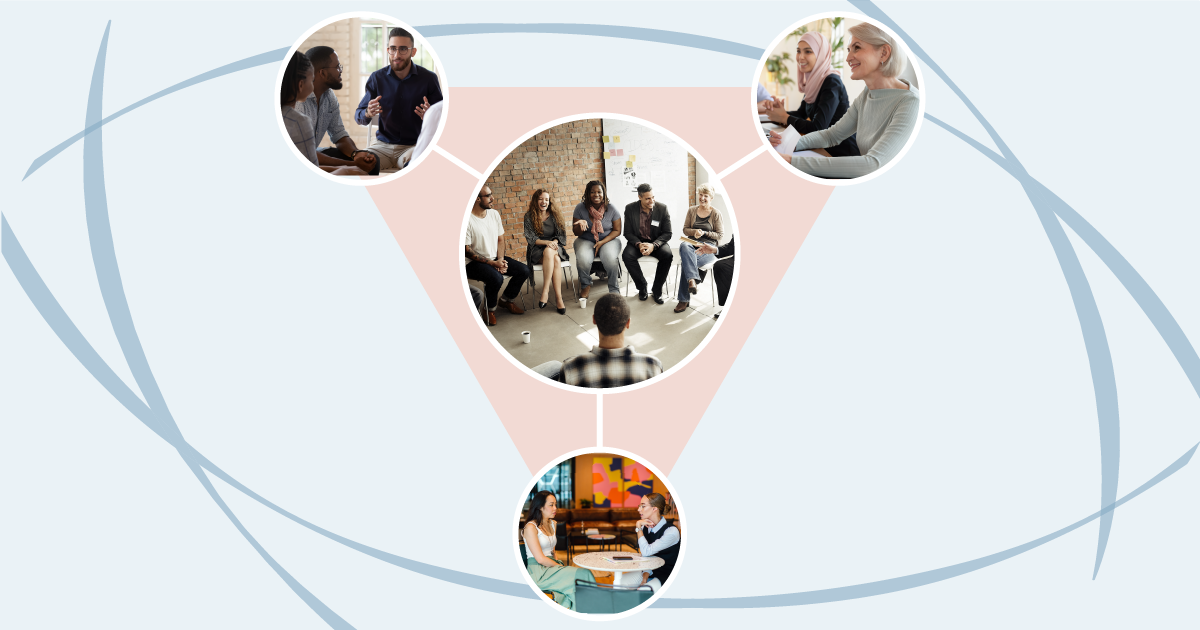By Catherine Conner, Natalia Lopez-Whitaker, Lacey Wilson
While the lenses of race, equity, and culture have opened widely this last year, we do not live in a post-racist society and as conflict resolution professionals, we all exist in spaces that intersect with white supremacy on multiple levels. We must bring sustained anti-racism work into our conflict work.
Anti-racism tries to think outside of current systems and policies to build something different. However, the challenges lie in the reality that current systems and policies were built to benefit one set of people. A sustained commitment to anti-racism work requires a strategy through awareness, education, and behavior change.
The three of us came together in 2016, as part of a group of six conflict resolution professionals in the Bay area dedicated to having difficult conversations about race to be more conscious of biases and privilege. Over the years, our group evolved into our Real Talk team and we helped—and continue to help—each other identify blind spots from our own biases. Through clarity and self-reflection, this process became a vehicle for understanding and empathy. Throughout these last several years, we have seen that the more transformative moments happen when spending time in conversation with people and building relationships.
Conversation offers an opportunity to go deeper. It is a dialogue that requires people to show up in the space and engage, rather than plowing forward. This includes stopping and reflecting and taking the time to process when things do not feel right. We do want to note that for sustained dialogue, a critical element to continuing this work is the ability to do your own healing work—especially for BIPOC folks.
We can come in with the motivation and drive to be anti-racist and change everything and so we want to move right away to action; however, this sense of urgency is actually a way of avoidance and a characteristic of white supremacist culture. Anti-racism work is conflict work and part of that engagement includes working through your own avoidance.
A place we recommend starting is to bring anti-racism down in scale and think about who you’re in the room with in that moment. People tend to think about bigger pictures—”let’s do this good thing for this group of people outside of my environment.” Instead, start by thinking about your immediate circle of influence, and drilling it down to just who is in front of you at that moment.
Anti-racism work also requires recognizing the structural aspects around you that you can influence or change, such as what is happening in your workplace. For white people, your work begins in unpacking how you have contributed unconsciously to racism and the perpetuation of white supremacy. Part of this is accepting and examining what you have done in the past that caused harm and using this understanding as the foundation to help you figure out how you will work differently in the future and what you will repair, which goes hand-in-hand with healing.
As conflict resolution professionals, we need to continually develop our self-awareness and meet people where they are at. This includes not making assumptions about a person’s skills, knowledge, or courage about having a conversation about race and racism. What we have shared here is only a tip of the iceberg. If you would like to learn more about how to integrate anti-racism into your work, you can purchase a recording of our webinar, Being an Anti-Racist Conflict Professional. We take the next step in closely examining our own lives, practices and work habits. We also explore how to maintain an sustained awareness of race, equity, and culture every day and what we need to change in our professional environments to be anti-racist in our everyday work lives as conflict professionals.
